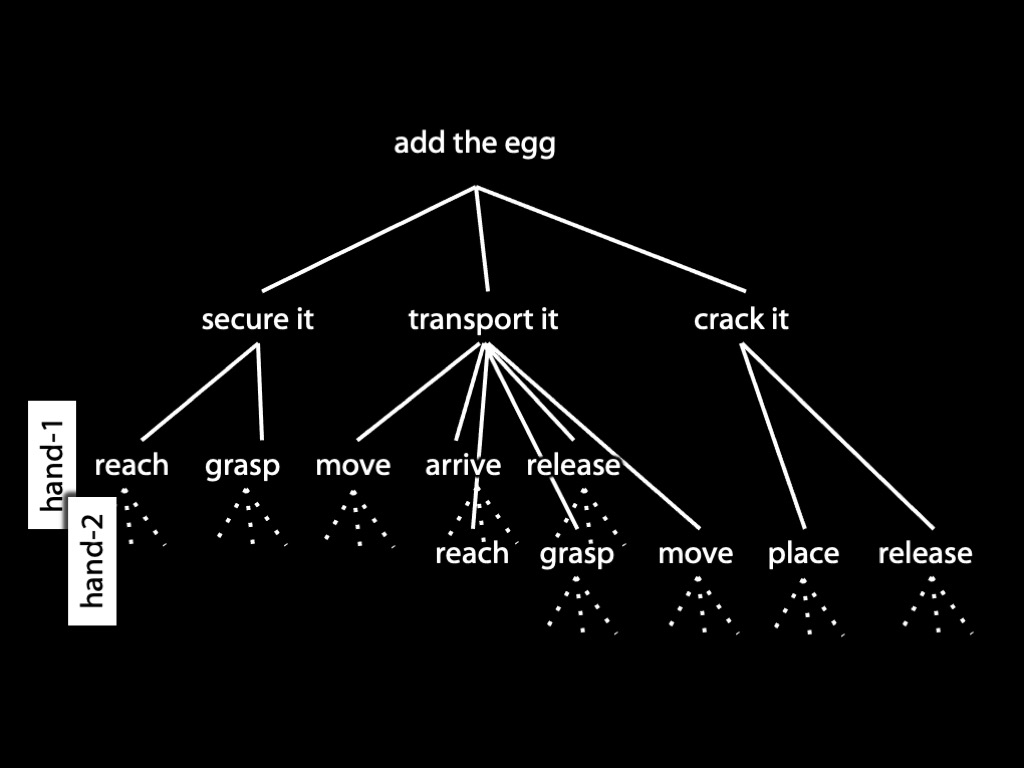Click here and press the right key for the next slide.
(This may not work on mobile or ipad. You can try using chrome or firefox, but even that may fail. Sorry.)
also ...
Press the left key to go backwards (or swipe right)
Press n to toggle whether notes are shown (or add '?notes' to the url before the #)
Press m or double tap to slide thumbnails (menu)
Press ? at any time to show the keyboard shortcuts
Introduction
essay question
What is an interface problem? ✓
Consider one case in which an interface problem arises. ✓
How could the problem be solved? ???
I want to show you
two interface problems.
interface problem #1:
motor representations vs intentions
background on motor representation (recap)
roles of motor representation
1. your intention to add an egg to the bowl triggers a motor representation






roles of motor representation
1. your intention to add an egg to the bowl triggers a motor representation
‘there is more to the causation of an action than its initiation, namely, how it is carried out.’ (Bach, 1978, p. 363)
2. a habitual process links a stimulus to an outcome: the stimlus triggers a motor representation

two questions
1. How do we know they are representations?
2. What do they represent?

Markers of motor representation ...
1. are unaffected by variations in kinematic features but not goals
2. are affected by variations in goals but not kinematic features
So: 3. carry information about goals (from 1,2)
Also
4. Information about outcomes guides planning-like processes.

two questions
1. How do we know they are representations?
2. What do they represent?